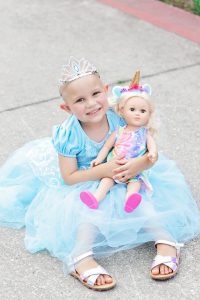Jae-Woong Chang, PhD, initially had his eye on medical school. But then his high school teacher pointed out: “Doctors can cure about only 10,000 people in their entire lifetime, but a researcher who creates a new treatment can cure a million people.”
That comment kindled a spark in Chang: one that would inspire him to eventually earn his PhD in cellular and molecular biology and to later move more than 6,000 miles to the University of Minnesota Medical School, where he’s now a research associate in the Department of Pediatrics.
Chang, who received a 2020 Emerging Scientist Award from Children’s Cancer Research Fund (CCRF), didn’t set out to become a cancer researcher. As a graduate student and postdoctoral fellow in South Korea, he focused on neurodegenerative diseases. But along the way, he realized that his interest in RNA processing and gene regulation could also be useful in cancer studies, and he was excited by the potential of childhood cancer research.
“Normally the types of cancer that develop in children are totally different from the types that develop in adults — childhood cancer is not related to lifestyle or environmental factors the way it is with adults,” he said. “Although we don’t really understand the main cause of pediatric cancer, some childhood cancers are caused by DNA or gene changes. So that means we have more chances with genetic tools to treat childhood cancer. Cell and gene therapy are one of the best strategies.”
But these treatments still have a way to go. Part of what makes cancer so challenging to treat is genetic diversity: a one-size-fits-all approach doesn’t work when cancer cells can vary widely among patients and even within the same tumor in an individual child. Chang is using advanced bioinformatics analysis and gene-editing tools to explore diversity in cancer proteins, which he hopes will reveal new targets for pediatric cancer treatments.
Ultimately, he hopes to use that information to increase the power of the body’s own immune cells — in particular, chimeric antigen receptors-natural killer (CAR-NK) cells.
“My project is simply to find out the unique protein targets of a tumor cell and then engineer the immune cell to easily recognize the tumor cell,” he said. “Natural killer and T-cells have some inherent abilities to kill a cancer cell, but many types of cancer cells are resistant. So I’m aiming to find the cancer-specific target so we can enhance the ability of immunotherapies to recognize the tumor cell. We’re going to give them some kind of specific weapon for killing the tumor.”
He compares the work to a sketch artist who draws a suspect for a wanted poster. To help law enforcement capture the right person, the artist needs to draw a very detailed portrait that helps police distinguish the suspect from innocent passerby. In such a way, he hopes his research will help characterize tumor cells in more detail, providing a better “picture” so that immunotherapies can zero in on the rogue cells.
For example, existing CAR T-cell therapies can easily recognize CD19, a protein that is a biomarker for certain types of cancer, including acute lymphoblastic leukemia (ALL), chronic lymphocytic leukemia (CLL), and B cell lymphomas. “But not all tumors have CD19, so we’re going to find out if there’s another target,” Chang explained. “If I uncover new targets, we could expand the application of these immunotherapies.”
Want to help researchers get the funding they need? Check out our blog post: Our most popular fundraising ideas.
Chang is using bioinformatics analysis to narrow down possible targets and then will use gene-editing tools to develop an antigen to test in the lab. “I found one of the candidate genes that I think could be very promising and could pave the way for further research,” he said.
And that will build the foundation for other studies. “Once we set up the bioinformatical pipeline to identify tumor-specific protein targets, it could be expanded easily to many cancer types, including adult tumors, to find out specific target of each cancer,” he said.
CCRF has provided vital start-up funding for his project. “In the biological field, we need a lot of money to pay for materials, and most of our experiments are labor intensive,” he noted. “Without this funding, I could not do anything.”
Once he gets sufficient data, he’ll be able to apply for federal grants to advance his work further. “It’s a very long journey,” Chang acknowledged. But thanks to the support of CCRF, he’s on his way.
Your donations make progress possible.
When you donate to Children's Cancer Research Fund, you make it possible for researchers to uncover how to better prevent and treat childhood cancers. Every $1 donated helps researchers secure $18 in additional funding to make groundbreaking discoveries.





